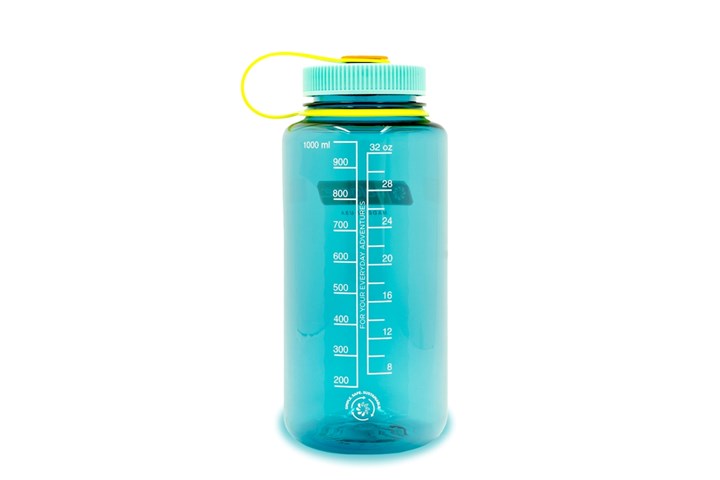Nalgene Bottle Production Completes Conversion to Certified 50% Recycled Material
Nalgene Outdoor has completed the conversion of its reusable water bottle manufacturing process to Eastman's Tritan Renew.
announced that as of January this year, it had completed conversion of its manufacturing process for reusable bottles to Eastman’s Tritan Renew, a certified 50% recycled material by the mass balance method of determination.
Widely used to describe recycled content, the mass balance method involves tracking the amount of recycled material entering and leaving the production process and using these figures to calculate the average recycled content in the product.

Nalgene reusable water container.
Photo Credit: Nalgene
The reusable bottles made with recycled material are expected to both replace single use bottles and help divert waste plastics from landfills. The process of converting to Tritan Renew, a copolyester, began in 2020. According to the company, it has re-purposed more than 2.35 million pounds of plastic waste since that time, and anticipates using 1.5 million pounds of recycled material each year now that the conversion is complete.
Nalgene bottles have been made using Tritan since 2008, when many brands switched away from using polycarbonate over public
Nalgene Outdoor is based in Rochester, NY and owned by Thermo Fisher Scientific. The company sources and makes its bottles within the United States.
Related Content
-
How to Extrusion Blow Mold PHA/PLA Blends
You need to pay attention to the inherent characteristics of biopolymers PHA/PLA materials when setting process parameters to realize better and more consistent outcomes.
-
PHA Compound Molded into “World’s First” Biodegradable Bottle Closures
Beyond Plastic and partners have created a certified biodegradable PHA compound that can be injection molded into 38-mm closures in a sub 6-second cycle from a multicavity hot runner tool.
-
Paperless ‘Smart Factory’ Based on Automated Production Monitoring
Tier 1 automotive molder’s home-built production-monitoring and ERP systems, designed for “the little guy,” boost its efficiency rating and profits.





